YOU ARE LEARNING:
Lowest Common Multiples

Lowest Common Multiples
The lowest common multiple is the smallest number that is a multiple of two other numbers.
A multiple is a number that is a product of two numbers. Which number below is a multiple of 5?

So 135 is a multiple of 5 because 5×27=135.
It's also true that 135=15×9.
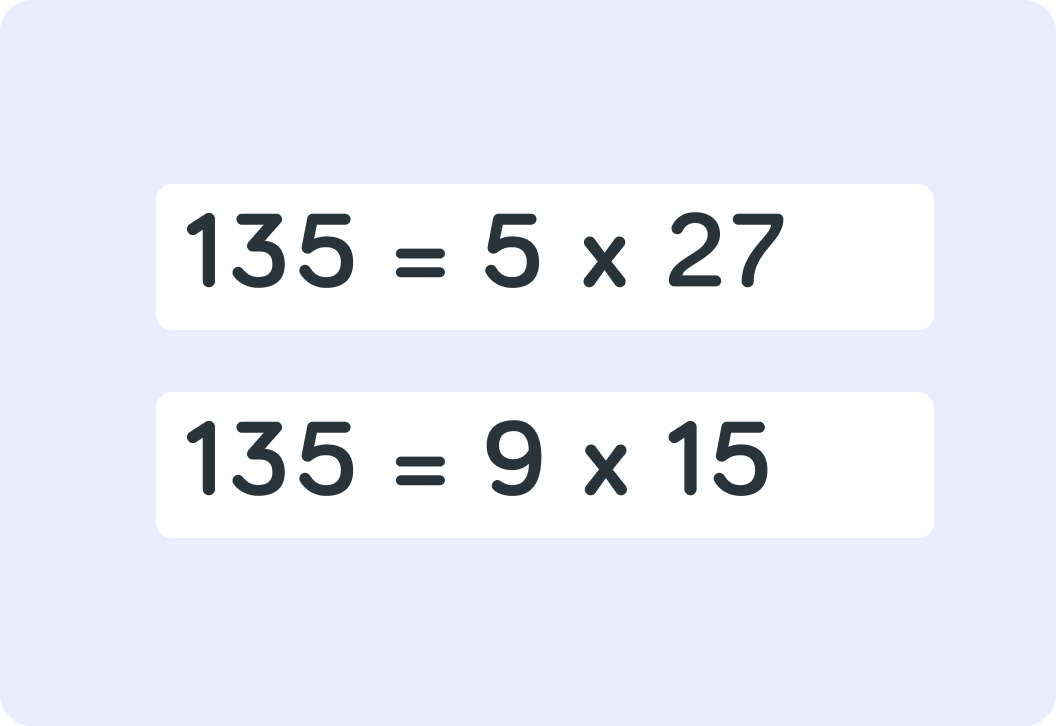
This means that 135 is a multiple of 5 and 15. What is the term for this?

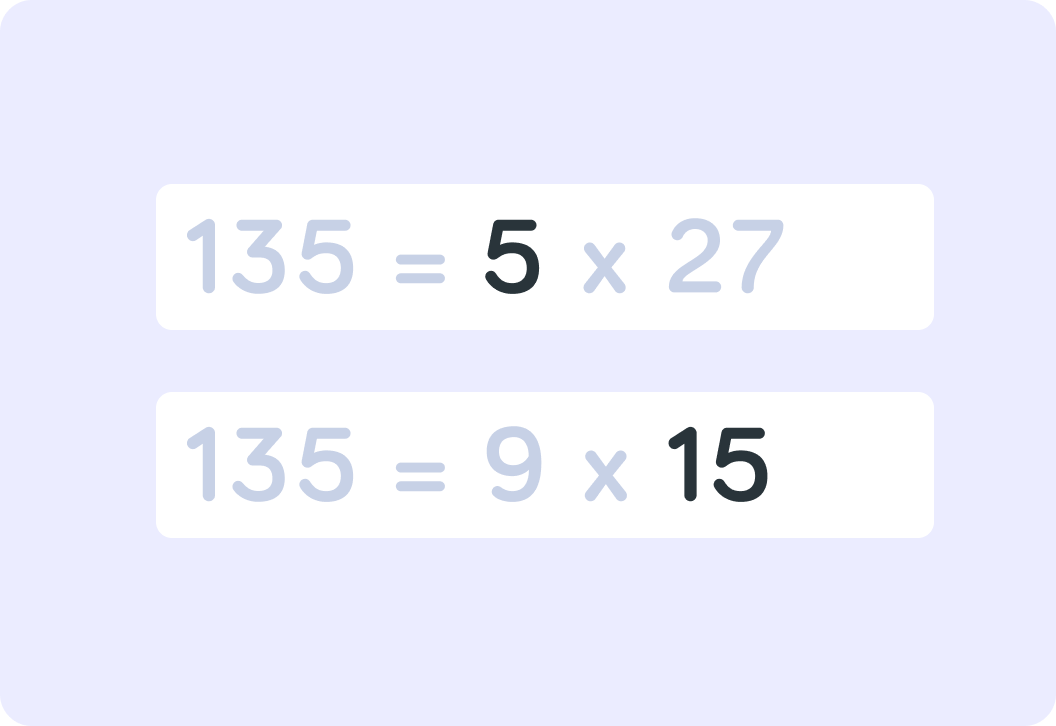
Sometimes we want to find the lowest common multiple of two numbers.
This is the smallest number that is a common multiple of them both. There are two ways we can approach this.
Let's find the lowest common multiple (LCM for short) of 8 and 6.
List the first three multiples of 8 separating your answers with a comma.


Are any of these also a multiple of 6 and if so, which one?


We have found the lowest common multiple of 6 and 8.
The LCM is 24.

Let's find the LCM of 12 and 15.
We list the multiples of the larger number - this means we have fewer multiples to find!
What are the first three multiples of 15? Separate your answers with a comma.

The first three multiples of 15 are 15, 30 and 45. Are any of these also a multiple of 12?

We need to find more multiples of 15. The first three are 15, 30 and 45. What are the next three? Separate your answers with a comma.

The next three multiples of 15 are 60, 75 and 90. Are any of these also a multiple of 12 and if so which one?

We have found the LCM of 12 and 15 which is 60.
Sometimes we have to find quite a few multiples, there is another method which can be quicker.
What is the LCM of 12 and 15 using prime factorisation?
This is the prime factorisation of 15
3 and 5 are both prime numbers that multiply to make15.

What is the prime factorisation of 12?

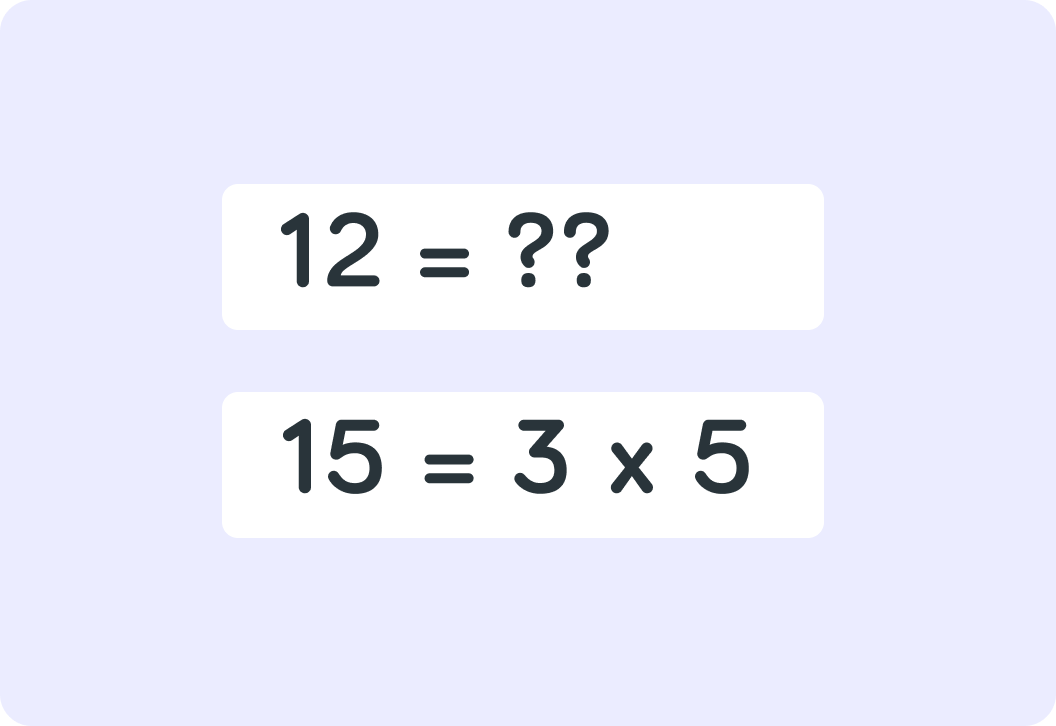
We have the prime factorisation of both our numbers.
To find the LCM we eliminate the duplicate of any common prime factors the multiply the numbers that remain
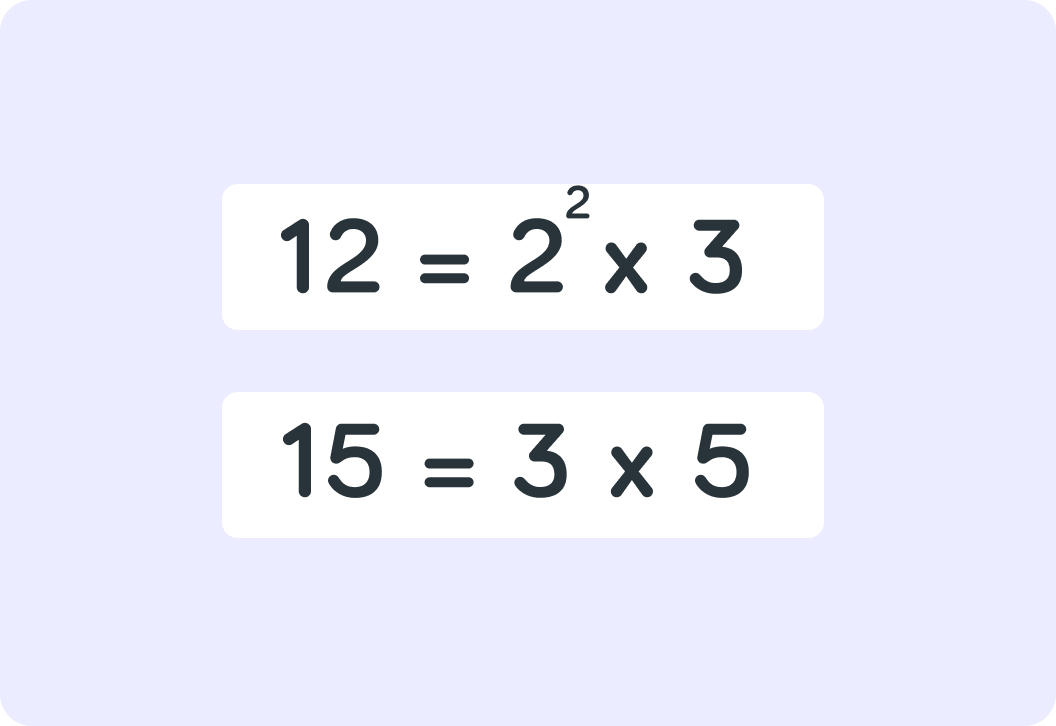
Which prime factors do each of these numbers have in common?


We eliminate one of these common factors so that we don't duplicate it. Are there any other common prime factors?

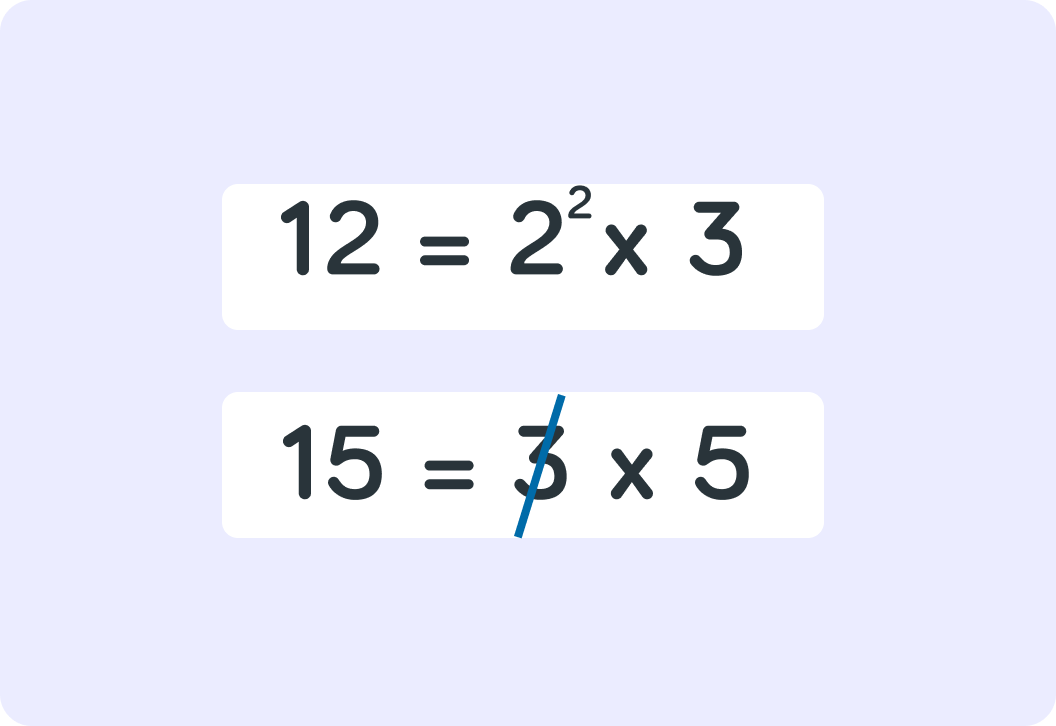
To find the LCM, we take the remaining prime factors and multiply them all together. What is the answer?


We have used both methods to find the LCM of 12 and 15 is 60
Prime factorisation means we don't need to find lots of multiples.
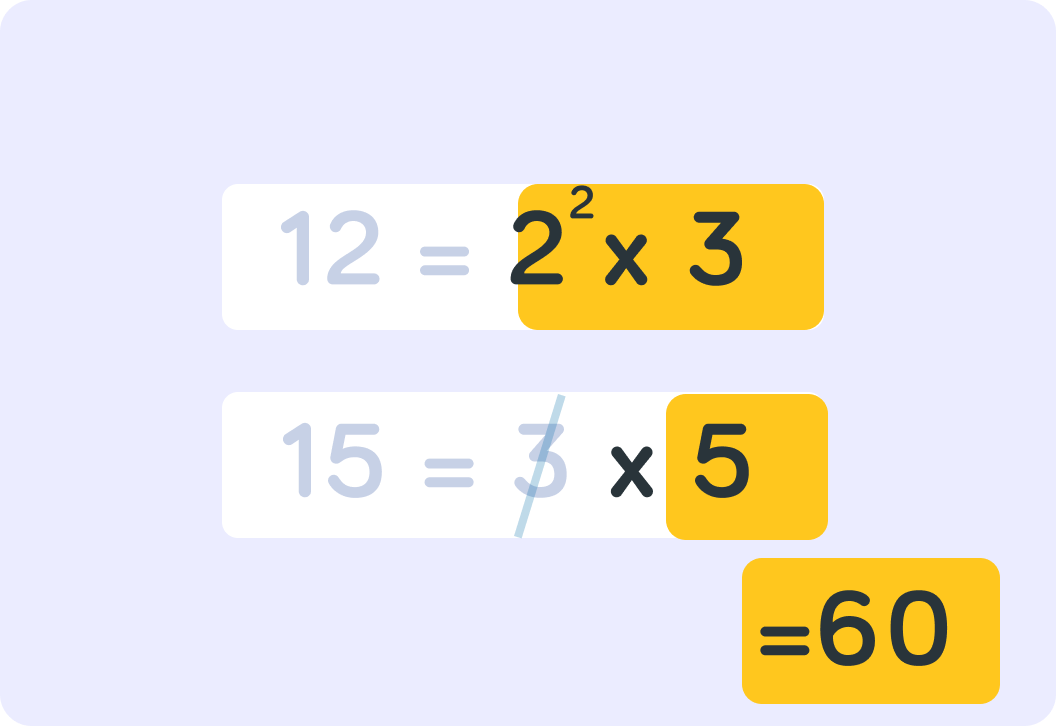
Let's work through this one - find the LCM of 40 and 90.
The prime factorisation of 90 is 2×32×5.
What is the prime factorisation of 40?

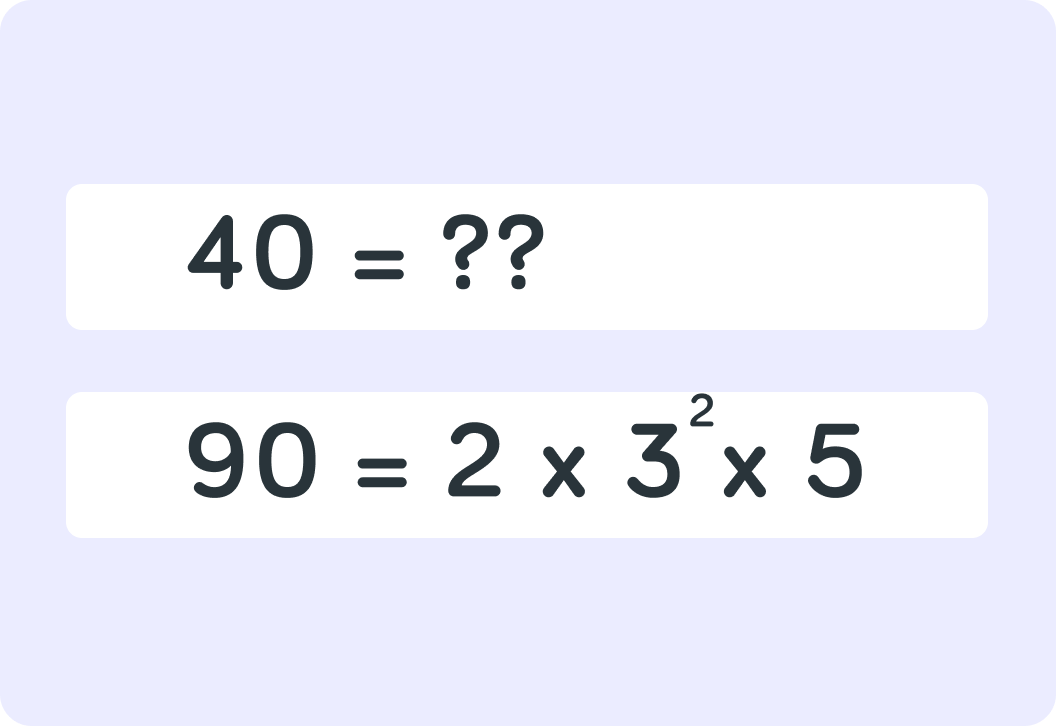
We now have the prime factorstions of both numbers. What are the common prime factors? Separate your answer with a comma.

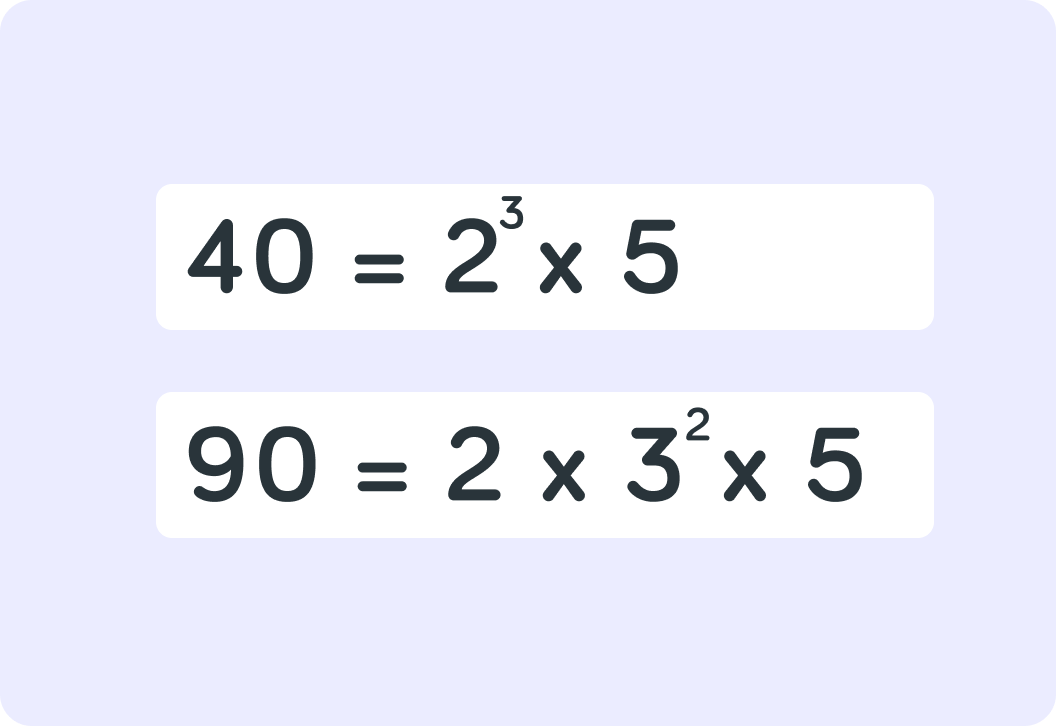
This time we need to be careful which prime factor we cross through.
Where a factor has a power, we cross through the factor with the lowest power.
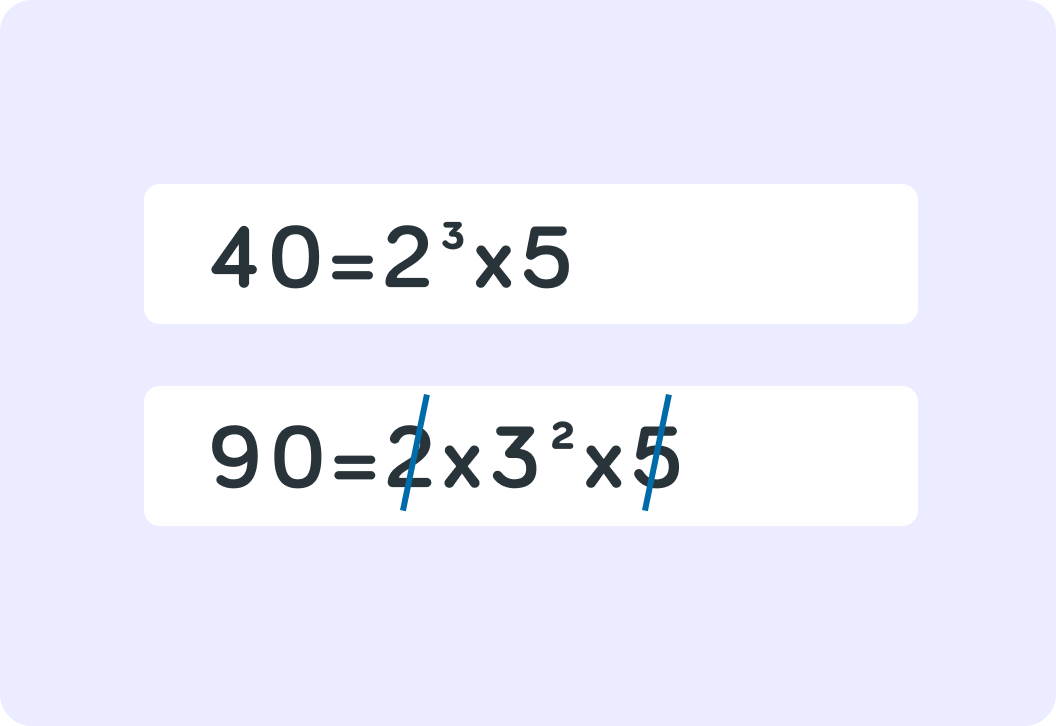
Find the LCM of 40 and 90 by multiplying out the remaining prime factors.


Well done - you've found the LCM of 40 and 90!
The LCM is 360.
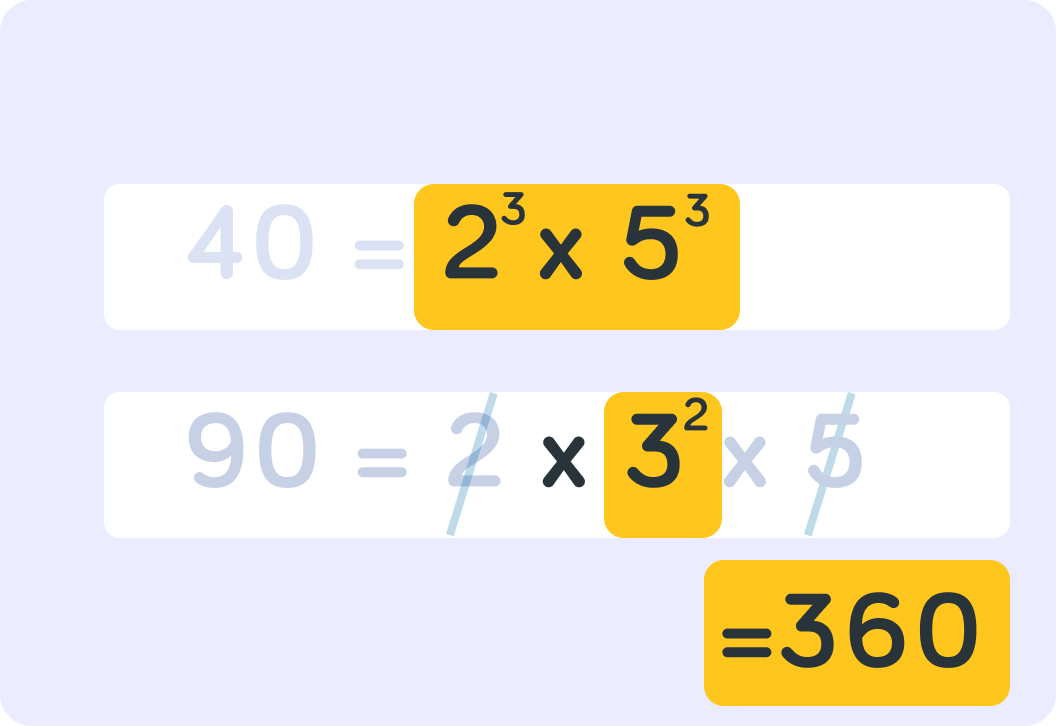
Let's find the LCM of 16 and 40. First find the prime factorisation of 16.

Now find the prime factorisation of 40.

The prime factorisations are: 16=24
40=23×5 Which is the only common prime factor?

The prime factorisations are: 16=24
40=23×5 Taking out the duplicate factors, what is the LCM of 16 and 40?

Use either method to find the Lowest Common Multiple of 14 and 8.

What is the LCM of 75 and 90

Summary!
A multiple is a number that is a product of two numbers.
20 is a multiple of 5 because 5×4=20.
A common multiple is a number that is a multiple of two other numbers.
20 is a common multiple of 5 and 10.
There are two ways of finding the LCM of two numbers
-
List the multiples of the larger number and stop when you find a multiple of the smaller number.
-
Use the prime factorisation technique
- List multiples of 15 to find the LCM of 6 and 15
Find multiples of 15 until you reach a multiple of 6. These are 15, 30 and we stop there because 30 is also a multiple of 6.
- Prime factorisation can also be used to find the LCM.
The LCM of 15 and 27 is 135.
The prime factorisation of: 15=3×5
27=33
Cross through the common prime factors, where there is a power, cross through the lowest power. This leaves 3×5 and 33 giving the LCM as 33×5=135.
